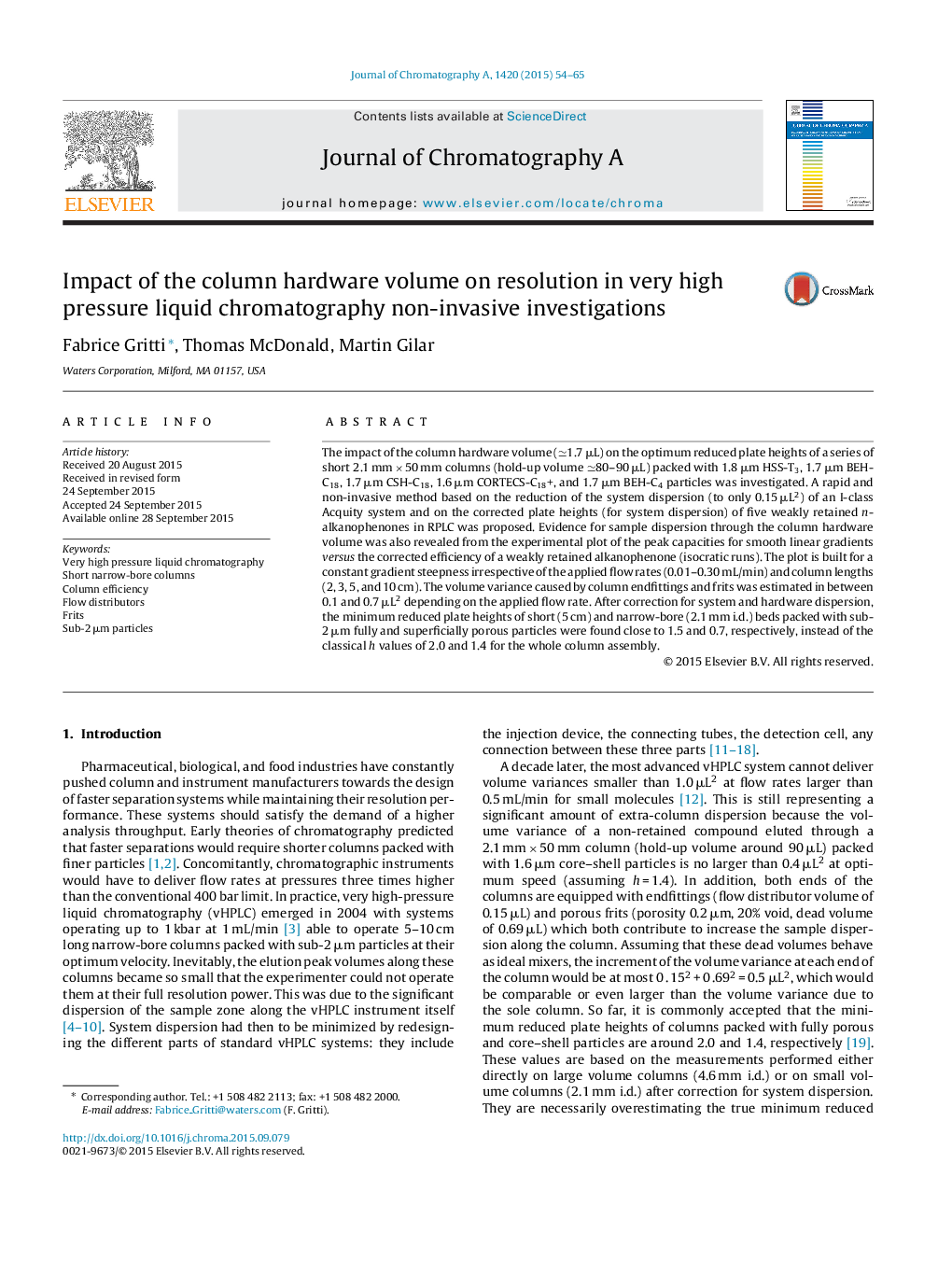| Article ID | Journal | Published Year | Pages | File Type |
|---|---|---|---|---|
| 1200877 | Journal of Chromatography A | 2015 | 12 Pages |
Abstract
The impact of the column hardware volume (â1.7 μL) on the optimum reduced plate heights of a series of short 2.1 mm Ã 50 mm columns (hold-up volume â80-90 μL) packed with 1.8 μm HSS-T3, 1.7 μm BEH-C18, 1.7 μm CSH-C18, 1.6 μm CORTECS-C18+, and 1.7 μm BEH-C4 particles was investigated. A rapid and non-invasive method based on the reduction of the system dispersion (to only 0.15 μL2) of an I-class Acquity system and on the corrected plate heights (for system dispersion) of five weakly retained n-alkanophenones in RPLC was proposed. Evidence for sample dispersion through the column hardware volume was also revealed from the experimental plot of the peak capacities for smooth linear gradients versus the corrected efficiency of a weakly retained alkanophenone (isocratic runs). The plot is built for a constant gradient steepness irrespective of the applied flow rates (0.01-0.30 mL/min) and column lengths (2, 3, 5, and 10 cm). The volume variance caused by column endfittings and frits was estimated in between 0.1 and 0.7 μL2 depending on the applied flow rate. After correction for system and hardware dispersion, the minimum reduced plate heights of short (5 cm) and narrow-bore (2.1 mm i.d.) beds packed with sub-2 μm fully and superficially porous particles were found close to 1.5 and 0.7, respectively, instead of the classical h values of 2.0 and 1.4 for the whole column assembly.
Related Topics
Physical Sciences and Engineering
Chemistry
Analytical Chemistry
Authors
Fabrice Gritti, Thomas McDonald, Martin Gilar,
